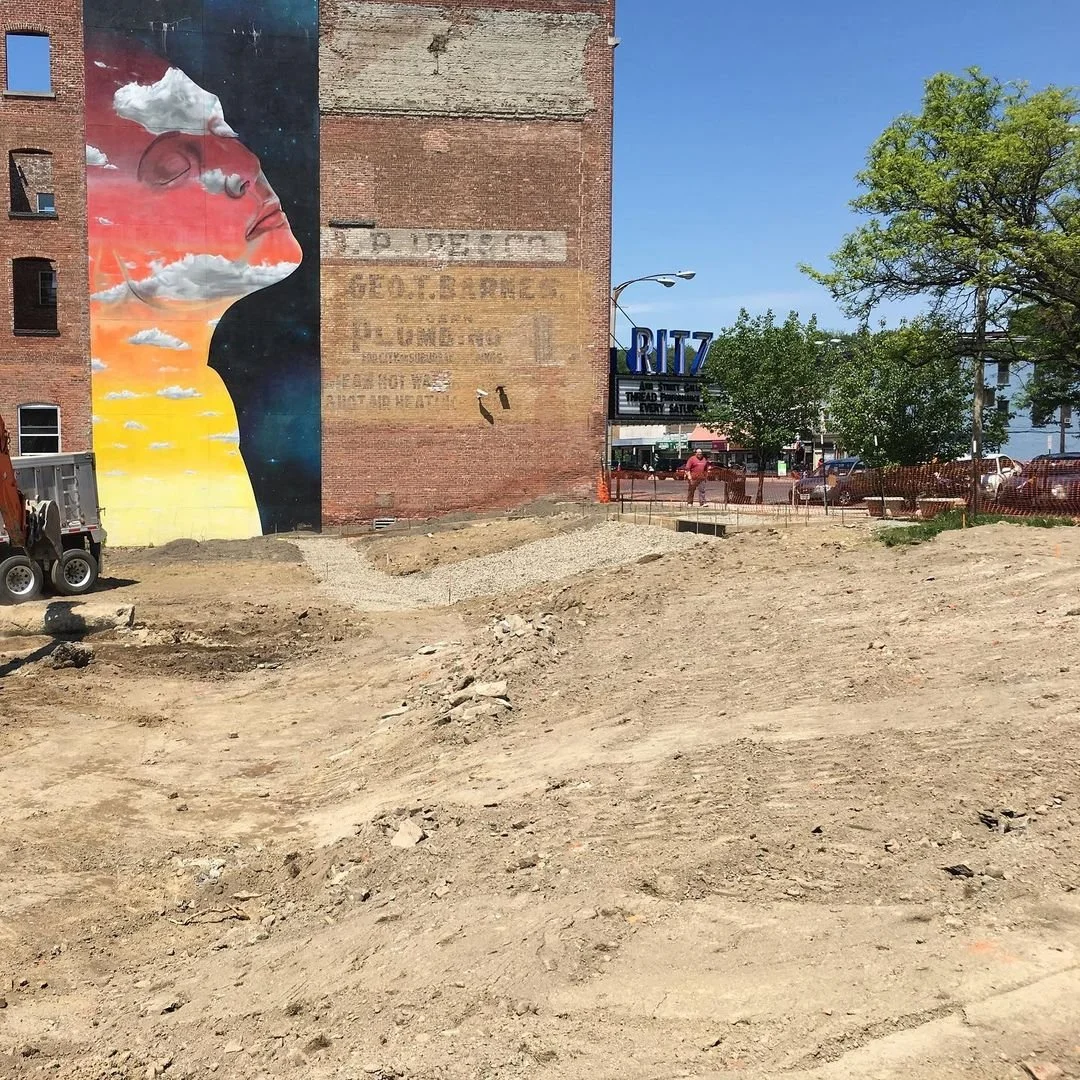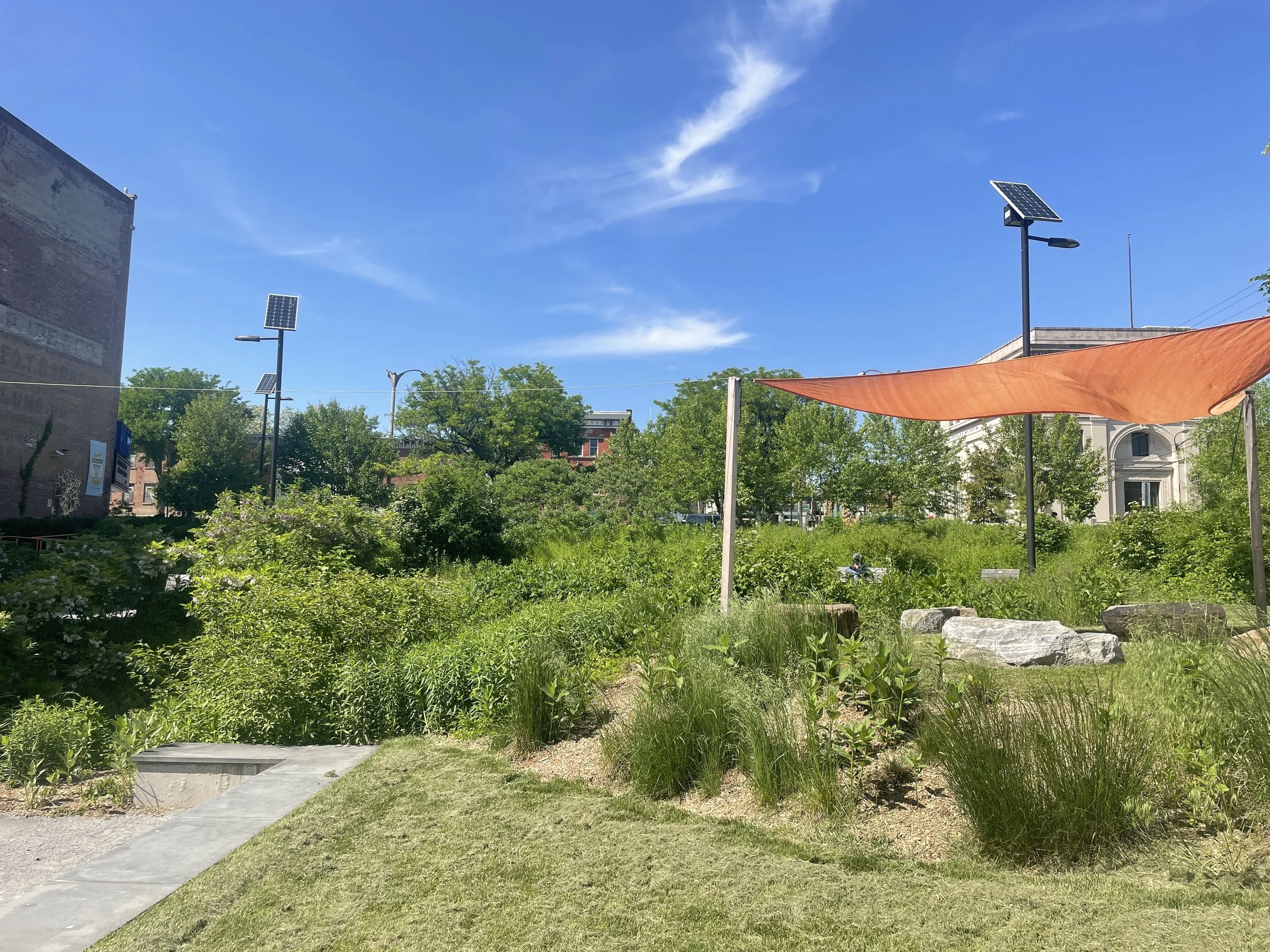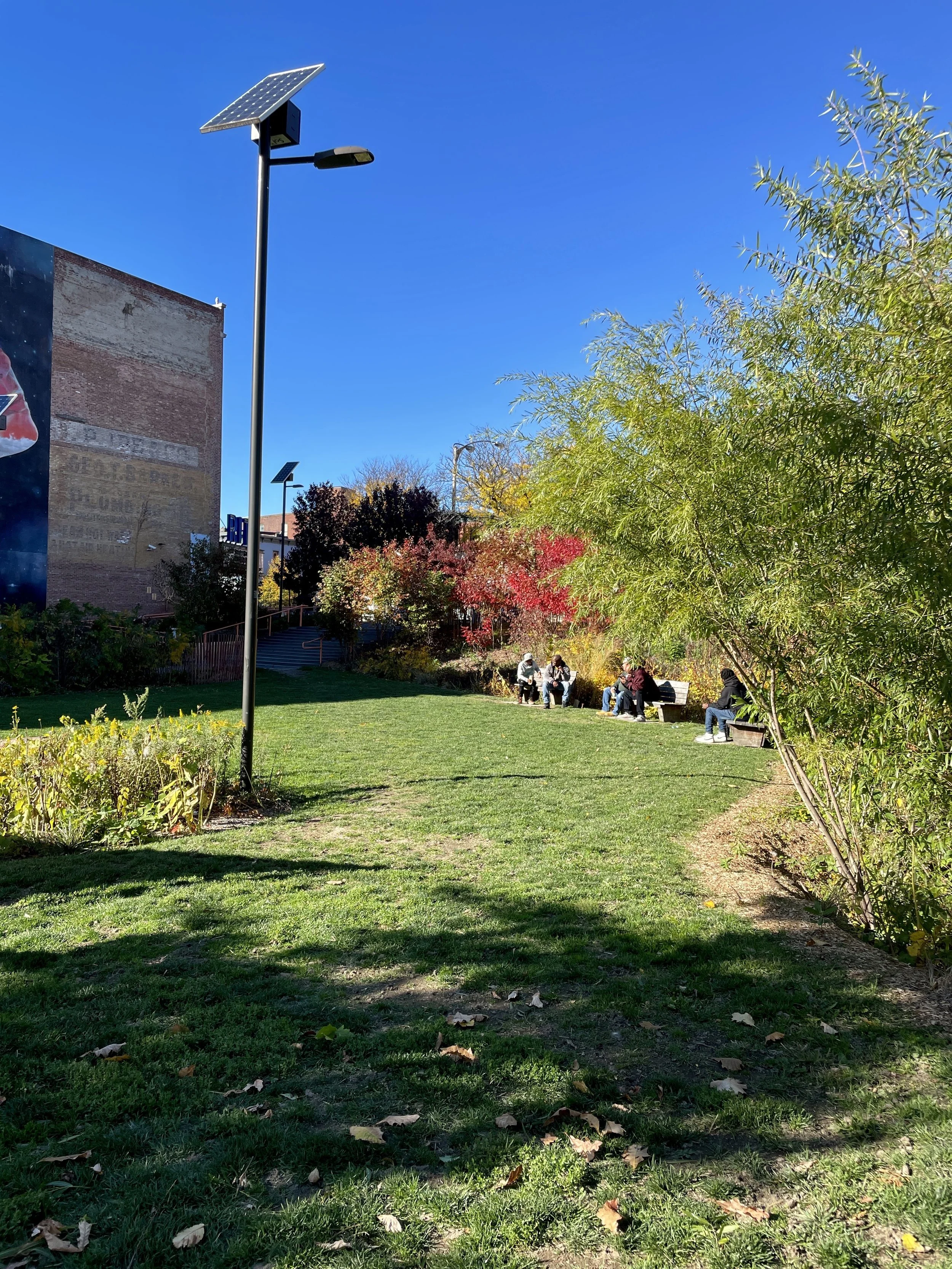Safe Harbors Green
Safe Harbors Green is a project that we are deeply proud of, not just for its design but for the impact it has on the community and the environment. We see it as much more than a park—it’s a space where art, ecology, and community come together to address the challenges of urban living. What was once a half-acre of neglected, debris-filled land is now a vibrant, multi-tiered landscape that connects people to nature in meaningful ways.
The process of reimagining this space was both creative and purposeful. By reshaping the topography, we created distinct zones for public and semi-private use, layering the space with opportunities for connection and reflection. One of the elements we’re most proud of is how we repurposed the foundation of a former house into a retaining wall. This choice not only minimized waste but also preserved a tangible link to the site’s history, anchoring the project in a dialogue between past and present.
Accessibility was at the heart of our design. We wanted this space to be welcoming to everyone, so we incorporated ADA-compliant features, including a gracefully sloped wheelchair ramp from Broadway and locally sourced crushed bluestone for well-graded paths. These elements make Safe Harbors Green a space where people of all abilities can feel comfortable and included.
Water management became an art form in itself. We designed a swale system to channel stormwater through the park, nourishing plants, cooling the environment, and allowing water to soak into the ground. We even diverted rainwater from adjacent building downspouts into this system, demonstrating our commitment to sustainability and resourcefulness.
Planting the park was one of the most rewarding phases. We began by observing native species thriving in nearby lots, allowing those insights to guide our initial selections. Today, the park features over 50 native trees, shrubs, and grasses, many grown from seeds we collected ourselves. These plants, predominantly pollinator-friendly species, have created a sanctuary for insects, butterflies, and birds. Safety was also a priority in our planting design, with sightlines carefully maintained to ensure visitors feel secure, even at night.
Public spaces like Safe Harbors Green are essential for advancing environmental justice. Communities that have been historically marginalized often lack access to green spaces, which are critical for physical and mental well-being. By creating this urban oasis, we are addressing that inequity and providing a refuge where everyone, regardless of background or socioeconomic status, can experience the benefits of nature. This park represents a step toward environmental justice, offering a safe, accessible, and beautiful space for all.
Beyond its role as a quiet retreat, Safe Harbors Green has become a cultural hub. It hosts concerts, festivals, and farmers' markets, serving as a gathering space that brings people together. This dual function—as both a peaceful refuge and a lively venue—highlights the versatility of its design.
Creating this park required a collective effort. Architect Jeff Wilkinson designed the durable benches from kiln-dried ash, while Jim Taylor of Taylor Recycling contributed excavation and land reshaping work. The Bruderhof community provided invaluable planting labor. Together, we transformed this lot into a thriving space that celebrates biodiversity and community.
Safe Harbors Green blurs the line between ecological restoration, public open space, and environmental art. It’s not just a park; it’s a story, a connection, and a vision for what urban spaces can be. It challenges us to rethink our relationship with the land, offering hope and inspiration for a more sustainable and inclusive future.












